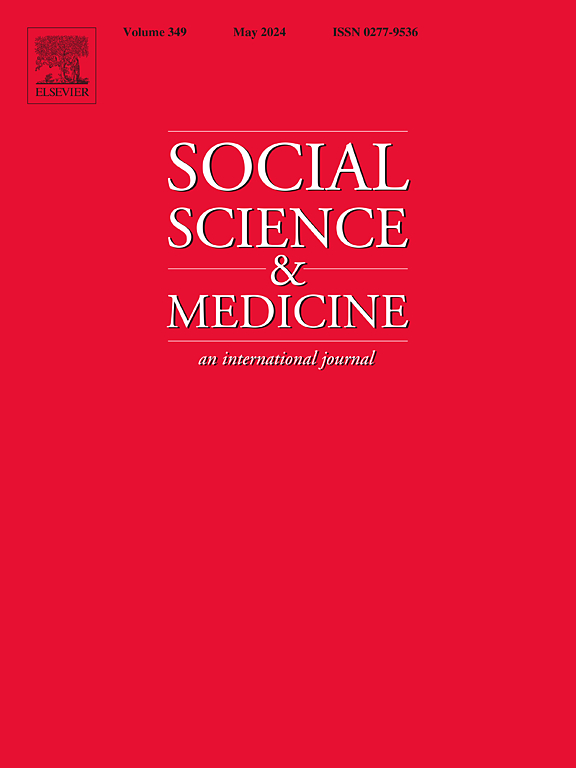在DEA的国家法医实验室信息系统(NFLIS)报告中检测到的噻嗪和美托咪定的时空格局
IF 5
2区 医学
Q1 PUBLIC, ENVIRONMENTAL & OCCUPATIONAL HEALTH
引用次数: 0
摘要
甲拉嗪和美托咪定是α - 2肾上腺素受体激动剂和镇静剂,最近在美国非法药物供应中作为掺假剂出现,使公共卫生监测和反应复杂化。在这项横断面研究中,我们使用了1999年至2024年缉毒局(DEA)国家法医实验室信息系统(NFLIS)的数据来检查这些物质检测的时间和地理趋势。我们还确定了10种最常见的“共同报告”药物,定义为与提交给NFLIS的羟嗪或美托咪定在相同癫痫发作中发现的物质;但是,这些不应被解释为真正的多物质混合物,因为它们不一定是物理混合的。总体而言,我们发现木嗪的报告从1999年的2份增加到2015年的149份,然后从2021年的9330份激增到2024年的25,047份,过去四年占所有木嗪报告的90%以上。同样,美托咪定报告从2021年的12份增加到2023年的245份,然后大幅增加到2024年的2276份。这一增长主要是由东北部推动的,美托咪定的报告从2023年的5份增加到2024年的1633份。芬太尼在52.9%的噻嗪和63.6%的美托咪定报告中共同报告,其中东北地区的比例最高,分别为78.7%和89.1%。这些发现强调了xylazine和medetomidine在非法药物市场上的快速传播,以及它们与芬太尼的频繁联合报告,强调了进一步的公共卫生监测和广泛分布的危害减少服务的必要性,以继续监测它们在美国的传播本文章由计算机程序翻译,如有差异,请以英文原文为准。
Temporal and spatial patterns of xylazine and medetomidine detected in the DEA's National Forensic Laboratory Information System (NFLIS) reports
Xylazine and medetomidine are α2-adrenergic receptor agonists and sedatives that have recently emerged as adulterants in the U.S. illicit drug supply, complicating public health monitoring and response. In this cross-sectional study, we used data from the Drug Enforcement Administration's (DEA) National Forensic Laboratory Information System (NFLIS) from 1999 to 2024 to examine temporal and geographic trends in detections of these substances. We also identified the ten most common “co-reported” drugs, defined as substances found in the same seizures as xylazine or medetomidine that were submitted to NFLIS; however, these should not be interpreted as true polysubstance mixtures since they were not necessarily physically mixed. Overall, we found that xylazine reports increased from just 2 in 1999 to 149 in 2015, then surged from 9,330 in 2021 to 25,047 in 2024, with the past four years accounting for more than 90 % of all xylazine reports. Similarly, medetomidine reports rose from 12 in 2021 to 245 in 2023, then substantially increased to 2,276 in 2024. This increase was largely driven by the Northeast, where medetomidine reports increased from 5 in 2023 to 1,633 in 2024. Fentanyl was co-reported in 52.9 % of xylazine and 63.6 % of medetomidine reports, with the highest shares in the Northeast at 78.7 % and 89.1 %, respectively. These findings underscore the rapid spread of xylazine and medetomidine in the illicit drug market and their frequent co-reporting with fentanyl, highlighting the need for further public health surveillance and widespread distribution of harm reduction services to continue monitoring their spread across the U.S.
求助全文
通过发布文献求助,成功后即可免费获取论文全文。
去求助
来源期刊

Social Science & Medicine
PUBLIC, ENVIRONMENTAL & OCCUPATIONAL HEALTH-
CiteScore
9.10
自引率
5.60%
发文量
762
审稿时长
38 days
期刊介绍:
Social Science & Medicine provides an international and interdisciplinary forum for the dissemination of social science research on health. We publish original research articles (both empirical and theoretical), reviews, position papers and commentaries on health issues, to inform current research, policy and practice in all areas of common interest to social scientists, health practitioners, and policy makers. The journal publishes material relevant to any aspect of health from a wide range of social science disciplines (anthropology, economics, epidemiology, geography, policy, psychology, and sociology), and material relevant to the social sciences from any of the professions concerned with physical and mental health, health care, clinical practice, and health policy and organization. We encourage material which is of general interest to an international readership.
 求助内容:
求助内容: 应助结果提醒方式:
应助结果提醒方式:


